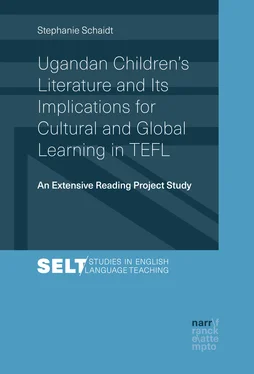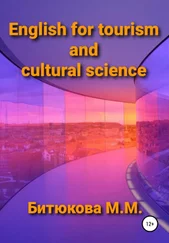Cates states that language teaching has a special status within the field of education. He talks of the “unique responsibility in promoting peace, justice, and an active concern for the world’s problems” (2002, p. 43) and the “flexibility of topic” (2002, p. 44) that sets languages apart from other subjects. Cates refers to a precursor in the field of global education, the so called Linguapax project that emerged from an UNESCO conference on “Teaching Foreign Languages for Peace and Understanding” in 1987. It was one of the first initiatives that linked language teaching with global education. Today Linguapax is an NGO that is “dedicated to the appreciation and protection of linguistic diversity worldwide” (Linguapax, n.d.).
Cates (2002, p. 46) criticises the status quo in the foreign language classroom. Textbooks only treat global issues shallowly, if at all, and so rather create stereotypes and bias instead of deconstructing them, he asserts. According to him, traditional schooling characterised through rote memorisation, passive learning and examination pressures does not adequately prepare young people to cope with global challenges (2004b, p. 241). He pleads for more task-based, experimental, interactive and cooperative learning (Cates & Jacobs, 2006).
Essential for Cates’s concept of global education is that it intends to go beyond a mere incorporation of facts about global issues (knowledge) and instead encompasses a profound involvement and concrete impulses for action. Cates divides his concept, therefore, into four dimensions:
Knowledge about world countries and cultures, and about global problems, their causes and solutions;
Skills of critical thinking, cooperative problem solving, conflict solution, and seeing issues from multiple perspectives;
Attitudes of global awareness, cultural appreciation, respect for diversity, and empathy;
Action: the final aim of global learning is to have students ‘think globally and act locally’. (2004b, p. 241)
Cates states that global education can be applied in various ways in teaching. It should not only encompass the integration of global issues in the EFL classroom (content) but also involve methods, materials, course design, etc.:
Global education is as much a matter of how we teach as of what we teach. For many teachers, this involves a shift from passive to active learning, from teacher- to student-centered classes, from language as structure to language for communication about the world. (2002, p. 45)
In the last two decades, there has been a remarkable amount of publications in the field of global education in Germany (e.g. Lütge, 2015a; Thaler, 2006–2011). Different thematic areas within global education are addressed: While some scholars focalise peace education (Diehr, 2007; Florio-Hansen, 2002; Hammer, 2012b), others look into human rights (Bland, 2012; Genetsch, Hallet, Surkamp, & Weisshaar, 2012), gender issues (Thaler, 2008a) or ecodidactics (Küchler, 2009; Mayer, 2006; Mayer & Wilson, 2006; Volkmann, 2012). Both issues of diversity (Kroschewski, 2015) and topics that are of universal human interest or have universal validity such as family, school, friendship and love (Alter, 2012; Volkmann, 2007, p. 150) are considered relevant in the global age.
Grimm et al. (2015, pp. 163–164), drawing on Volkmann (2010, pp. 195–196) and Hammer (2012a, p. 75), published a list of twelve “obviously interrelated and overlapping thematic fields” which may be focused on in the EFL classroom to develop “global competence”:
Demographic aspects: mobility, dissolution of space, spatial ‘shrinking,’ processes of migration, settlement, mass migration, according to countries, cultures, social groups, etc., the politics of migration and immigration
Social aspects : religion, living together in multicultural societies, integration and ‘parallel societies’
Aspects of peace education and non-violence : violence and war, racism, armament, refugees, terrorism
Social aspects : human rights, gender issues, child rights, social commitment (e.g. ATTAC, Amnesty International, Terre des Femmes)
Political aspects and human rights education : human rights, global governance, immigration laws, politics of assimilation, multiculturalism, integration
Ecological aspects and environmental education : environmental pollution, deforestation, animal rights, recycling, natural catastrophes, climate change
Cultural aspects : global pop culture, McDonaldization, globalization and localization (local and global interconnections)
Socio-economic aspects : poverty, unequal distribution of wealth, consumer societies, commercialism, financial systems, market economies, fair trade
Technical aspects : traffic, mobility, digitalization
Media aspects : media use, Internet, social networks, global communication, smart phones
Health education : drugs, fighting AIDS and other global diseases, food (fast food vs. balanced diet)
Language-related aspects : language imperialism (English as ‘killer language’), communication problems, English as a lingua franca, business communication (see ch. 1.1). (Italics in the original)
Global education is considered to be both “ Themenfeld und Unterrichtsprinzip [topic area and teaching principle]” (Jancke & Surkamp, 2012, p. 65). Key areas of the world risk society are selected and used as examples in the classroom with the goal of fostering students’ global competence. The scholars, however, also point out that in order to reach this goal a certain methodology needs to be applied. It includes rather student-centred classes, active, experiential, task-based learning, and interdisciplinary projects.
As transcultural learning, global education, though considered an essential supplement of cultural learning, is also criticised for problematic aspects. Hammer (2012a, pp. 77–78) and Peaty (2004) list several points of criticisms and concerns that are frequently raised in this context. There is the risk of preaching instead of teaching or even indoctrination. Moreover, teacher bias and inadequate teacher education in the field are considered problematic aspects. In addition, it is criticised that the curriculum is already full and that language lessons should focus on language and leave world affairs to the social studies.
A major point of criticism focuses on universalising tendencies in global learning. Scholars (Andreotti, 2008; Fäcke, 1999; Merryfield, 2009) point out that a basic principle of global education is an epistemology that suggests certain universal and ‘correct’ ways of thinking and acting. Developed by white Western scholars, it frequently carries the inherent assumption that Western ideas about education, development or human rights are universal/superior, they argue.2
Global education is also frequently attacked for being too idealistic and for not focusing enough on power asymmetries. Fäcke (1999, pp. 51–55) raises this point of criticism with reference to Bühler’s concept of global learning. She comments on his book Perspektivenwechsel? Unterwegs zu ‘globalem Lernen’ (1996) in which Bühler strongly pleads for a protection of the weak. According to Fäcke, his approach is utopian and implies a claim to absoluteness. It does not withstand critical perspectives of power, she states. Power asymmetries are only mentioned but not sufficiently contextualised. There is not enough criticism of existing conditions and no suggestions for tackling power imbalances are made. In addition, Fäcke criticises that Bühler’s approach focuses only on ‘the other’ and not ‘the self’. The gaze from the perspective of the powerful is so turned to the powerless and Bühler’s concept clearly addresses a ‘Western’, European target group:
Читать дальше












